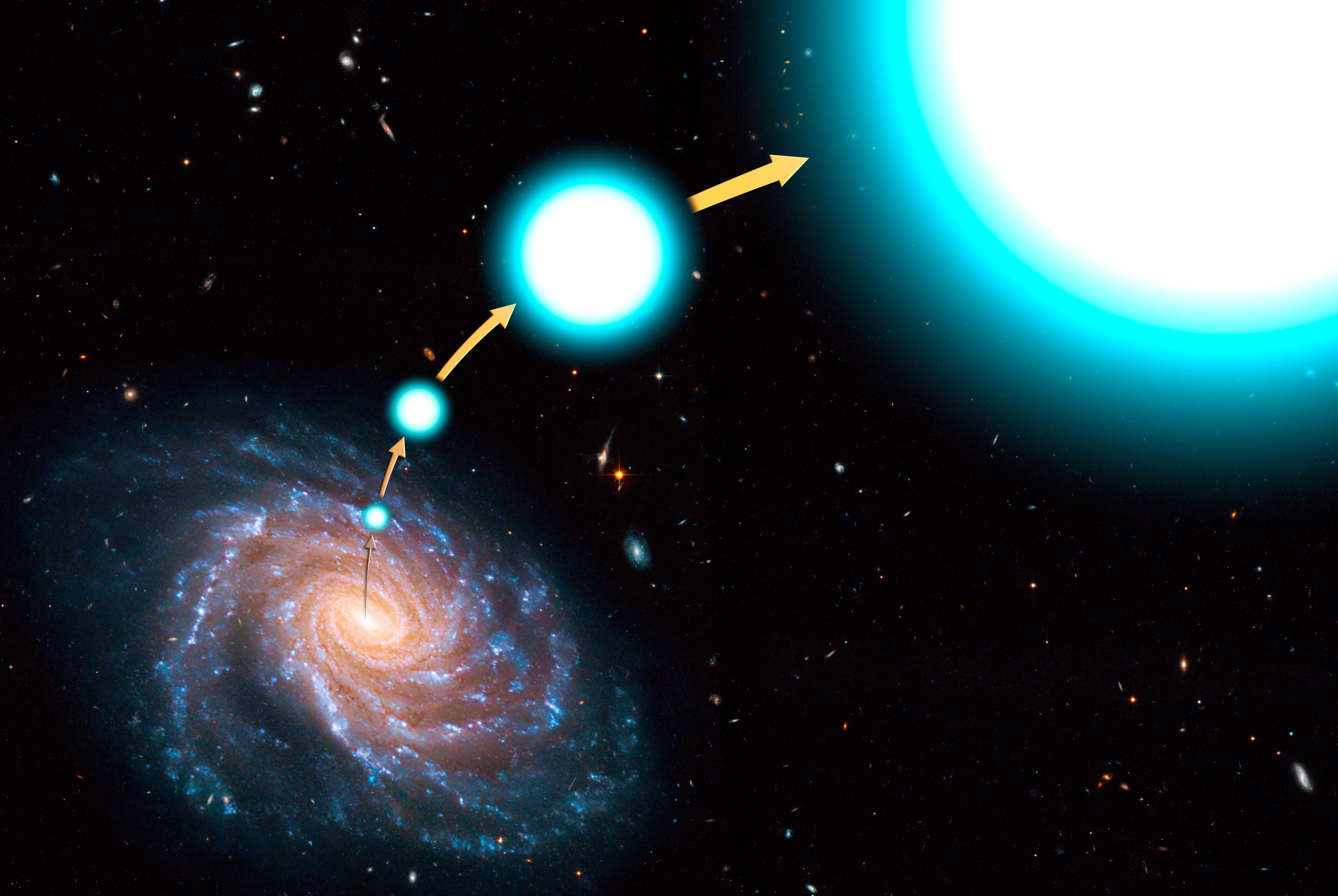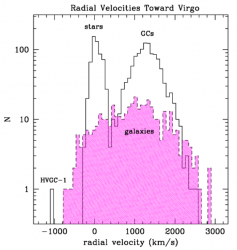In 2013, the European Space Agency launched the Gaia spacecraft. As the successor to the Hipparcos mission, this space observatory has spent the past three and a half years gathering data on the cosmos. Before it retires sometime next year (though the mission could be extended), this information will be used to construct the largest and most precise 3D astronomical map ever created.
In the course of surveying the cosmos, Gaia has also revealed some very interesting things along the way. For example, after examining the Gaia catalog with a specially-designed artificial neural network, a team of European researchers recently detected six new hypervelocity stars in the Milky Way. And one of these stars is moving so fast that it may eventually leave our galaxy.
Their study – titled “An Artificial Neural Network to Discover Hypervelocity Stars: Candidates in Gaia DR1/TGAS” – was recently published in the Monthly Notices of the Royal Astronomical Society. It was presented late last month at the European Week of Astronomy and Space Science, which was being held from June 26th to June 30th in Prague, Czech Republic.
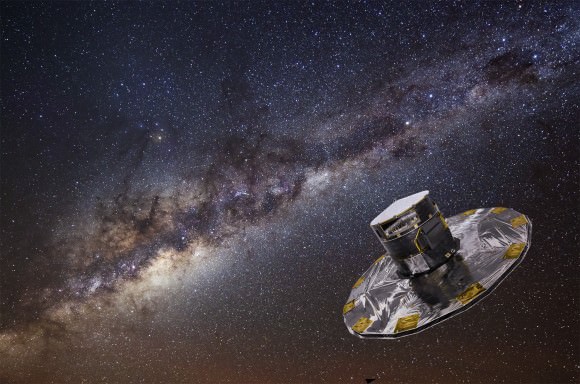
Hypervelocity stars are a rare and fascinating thing. Whereas all stars in the Milky Way are in constant motion, orbiting around the center of our galaxy, some are accelerated to speeds of up to hundreds of kilometers per second. In the past, astronomers have deduced that these fast-moving stars are the result of a close stellar encounter or a supernova explosion of a stellar companion.
And a little over a decade ago, astronomers became aware of a new class of high-speed stars that are believed to have been accelerated from past interactions with the supermassive black hole (Sagittarius A*) that sits at the center of our galaxy. These stars are extremely important to the study of the overall structure of the Milky Way, as they are indicative of the kinds of events and forces that have shaped its history.
As Elena Maria Rossi, from Leiden University in the Netherlands and one of the co-authors on the paper, explained in an ESA press release:
“These are stars that have traveled great distances through the Galaxy but can be traced back to its core – an area so dense and obscured by interstellar gas and dust that it is normally very difficult to observe – so they yield crucial information about the gravitational field of the Milky Way from the centre to its outskirts.“
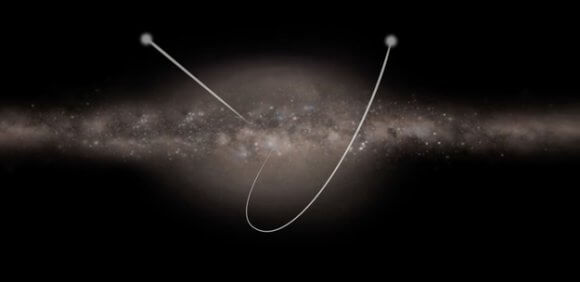
Finding such stars is no easy task, mainly because their velocity makes them extremely difficult to spot in the vast and crowded disk of the Milky Way. As a result, scientists have relied on looking for young, massive stars (2.5 to 4 Solar masses) in the old stellar population of the Galactic. Basically, their young age and high masses are indications that they might not have originated there.
Combined with measurements of their past speeds and paths, this method has confirmed the existence of hypervelocity stars in the past. However, only 20 hypervelocity stars have been spotted to date, and they have all been young and massive in nature. Scientists believe that many more stars of other ages and masses are also being accelerated through the Milky Way, but were previously unable to spot them.
To address this, the European team – led by from Tomasso Marchetti of Leiden University in the Netherlands – began considering how to use Gaia‘s vast dataset to optimize the search for more hypervelocity stars. After testing various methods, they adopted the artificial neural net approach – i.e. using a machine learning algorithm – to search through the star census data Gaia is in the process of gathering.
Beginning in the first half of 2016, the team began developing and training this program to be ready for the first release of Gaia data – which occurred a few months later on Sept. 14th, 2016. As Tommaso Marchetti, a PhD student at Leiden University, described the process:
“In the end, we chose to use an artificial neural network, which is software designed to mimic how our brain works. After proper ‘training’, it can learn how to recognize certain objects or patterns in a huge dataset. In our case, we taught it to spot hypervelocity stars in a stellar catalogue like the one compiled with Gaia.”
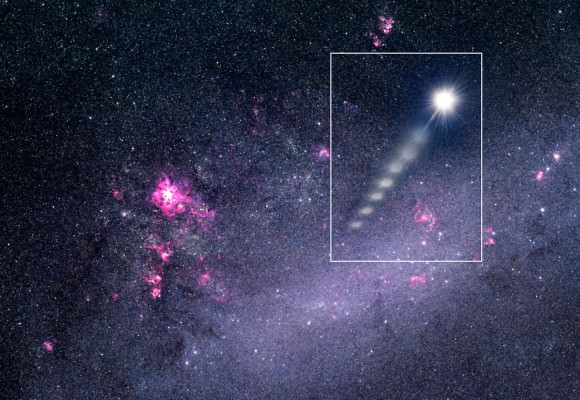
In addition to a map with the positions of over a billion stars, this first data release included a smaller catalogue with the distances and motions for two million stars. This catalog – which is known as the Tycho-Gaia Astrometric Solution (TGAS) – combined data from both the first year of the Gaia mission and with data from the Hipparcos mission, and is essentially a taste of what’s to come from Gaia.
On the day of the catalog’s release, Marchetti and his team ran their algorithm on the two million stars within the TGAS, which revealed some interesting finds. “In just one hour, the artificial brain had already reduced the dataset to some 20 000 potential high-speed stars, reducing its size to about 1%,” said Rossi. “A further selection including only measurements above a certain precision in distance and motion brought this down to 80 candidate stars.”
The team then examined these 80 stars in more detail, and compared the information about their motions to data from other catalogues. Paired with additional observations, they eventually found six stars which appeared to be moving faster than 360 km/s. One even appeared to be exceeding 500 km/s, which means that it is no longer bound by the gravity of our Milky Way and will eventually leave it altogether.
But perhaps the sot significant aspect of this find is the fact these stars are not particularly massive like the previous 20 that had been discovered, and were comparable in mass to our Sun. In addition, the 5 slower stars are likely to become a focal point of study, as scientists are eager to determine what slowed them down. One possible explanation is that interaction with the galaxy’s dark matter might have been responsible.
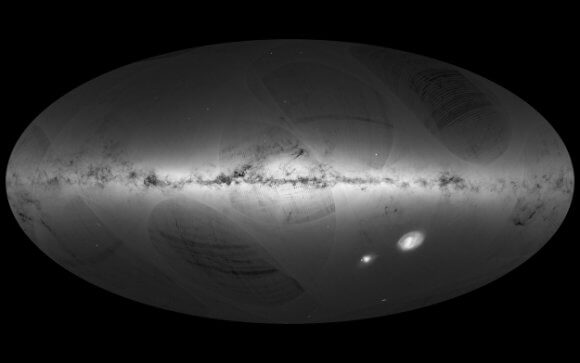
Much as the TGAS has been merely an early indication of the vast and valuable data Gaia will eventually provide, this study showcases the kinds of discoveries and research that this data will enable. By with not just 2 million, but a billion stars to study, astronomers are sure to reveal many new and exciting things about the dynamics of our Milky Way and the kinds of forces that have shaped it.
For this purpose, Marchetti and his team are upgrading their program to handle the much larger data set, which is scheduled to be released in April of 2018. This catalog will include distance and motions for over a billion stars, as well as velocities for a specific subset. From this, the team may find that fast-moving stars which are being booted out of the Milky Way are a lot more common than previously thought.
And be sure to enjoy this video that shows the paths of these six newly-discovered fast-moving stars, courtesy of the ESA:
Further Reading: ESA

